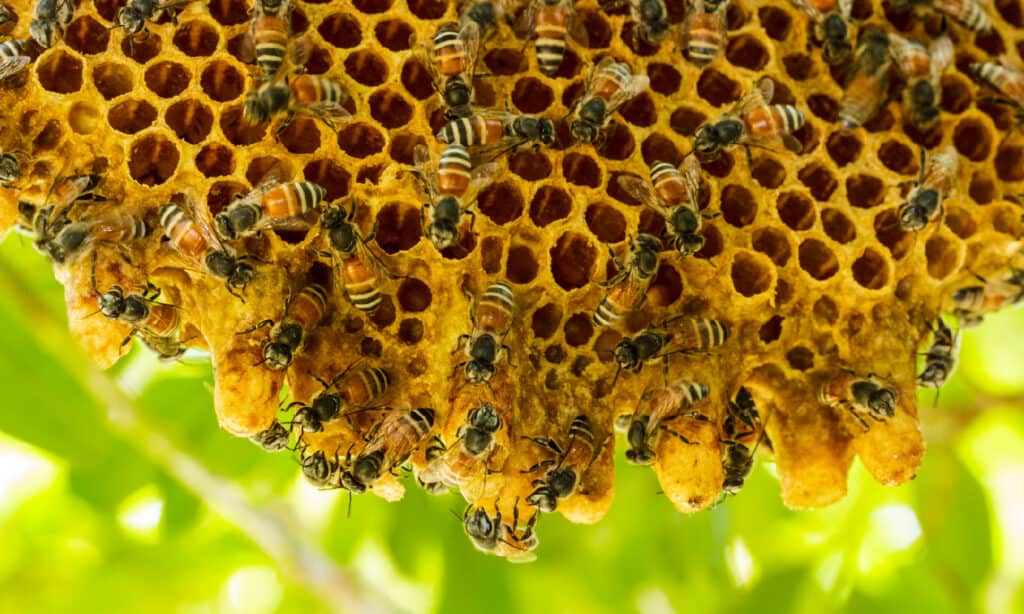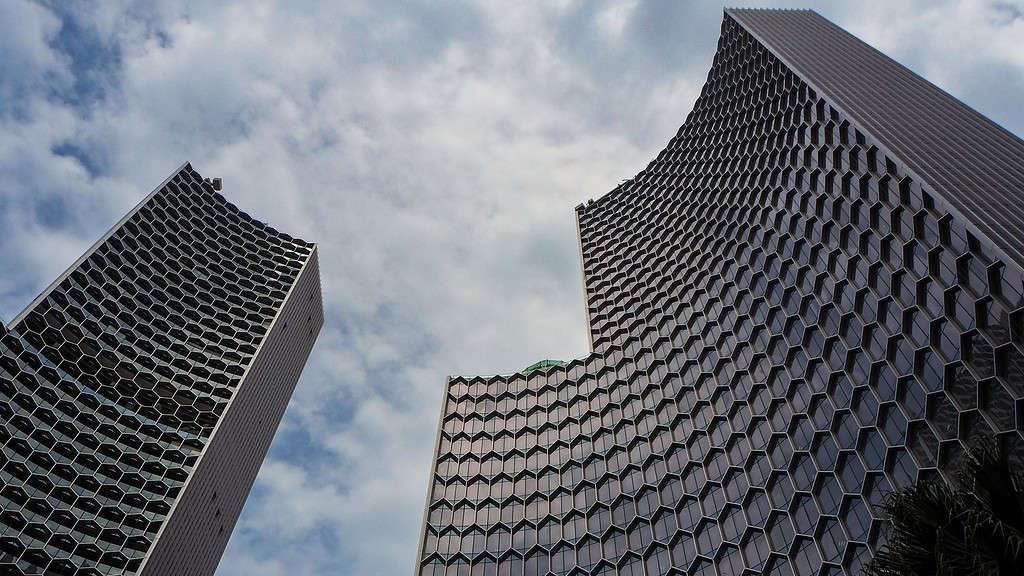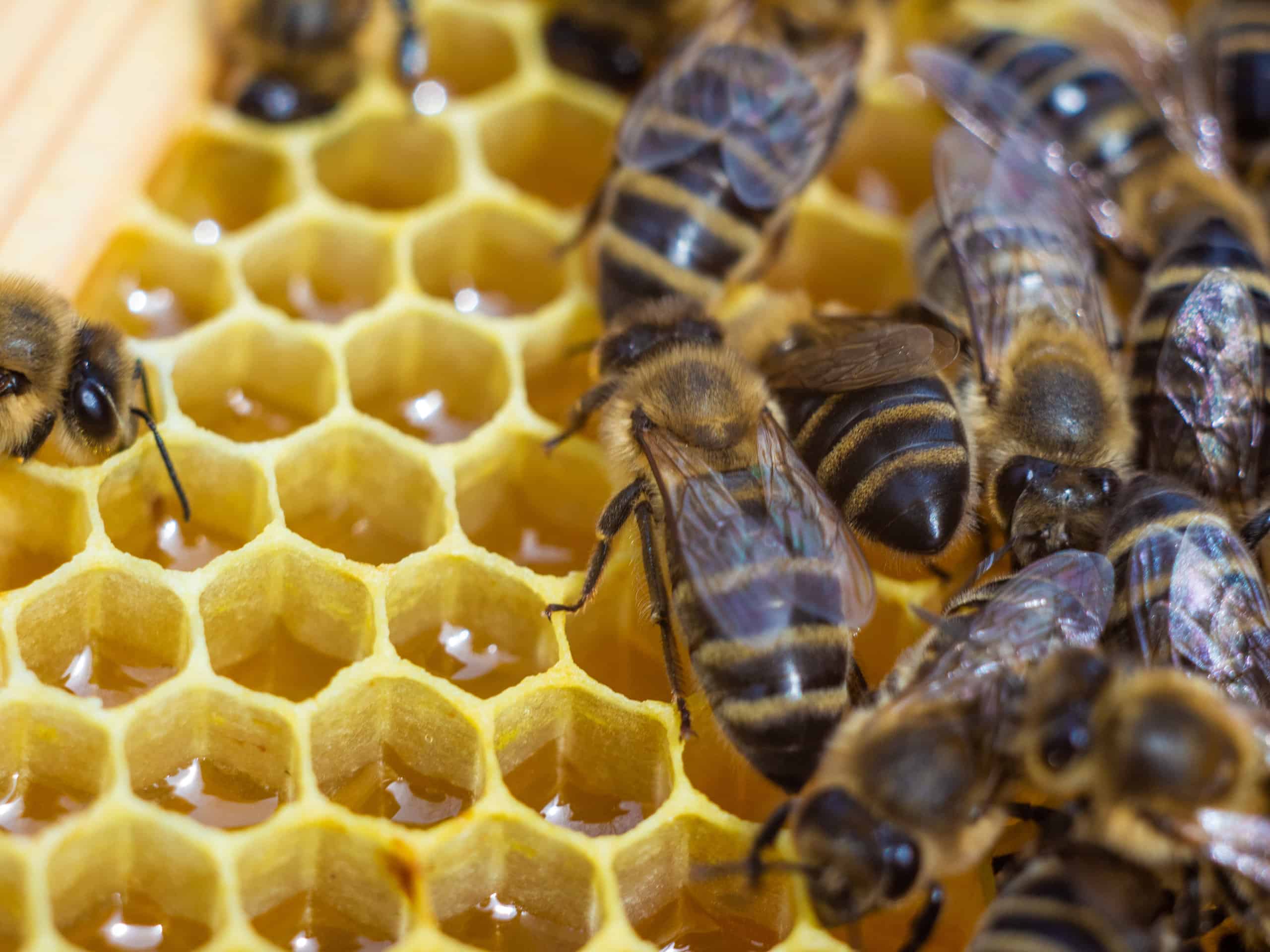If you’ve ever seen a cut of honeycomb, you’ve seen the little hexagons that bees build into the structure of this honey-rich goodness. But why do bees make hexagons in their hives? Does it help them navigate or count or better feed?
Let’s find out.
The Short Answer

If you look at a honeybee’s hive, you’ll see perfectly shaped hexagons everywhere. There’s a reason for this. It’s a more efficient use of space for a better life for the bees.
©iStock.com/nayneung1
While it might seem a simple answer — and it is — honeybees make hexagons in their hives because it allows them to use their space the most efficiently without wasting wax. Plain and simple, it’s the most economical way they can build their hives. Hexagons fit into each tightly, saving space while still providing plenty of storage for that ooey gooey golden honey.
How Bees Make Honeycomb

Honeycomb is made from beeswax, a secretion of young honeybees.
©iStock.com/Inventori
When we consider the use of hexagons in beehives, it’s important to first understand how it is that bees make honeycombs. First, the honeycomb is made from wax secreted by young bees. This wax is then taken by older bees and carefully formed into uniform hexagonal cells. Each wax cell stores honey for the honeybees’ winter food source.
Additionally, some of these wax hexagonal cells are used for protecting the young. These cells go by the name of “brood cells.”
Why Hexagons and Not Other Shapes?

The beautiful, perfect honeycomb hexagon. The unique shape was theorized by ancient scholar as the perfect shape for storage. A 20th Century scientist proved it.
©Aleksandr Rybalko/Shutterstock.com
The question surrounding the shapes bees build with dates back as far as 36 BCE, as far as we know. Records of a Roman scholar, Marcus Terentius Varro, show he asked the same question. His thoughts suggested that hexagons hold more honey than other shapes, breaking up the space into tiny units. Varro never got to prove his theory, but the question has become known as the Honeybee Conjecture.
Some 2000 years later, in 1999, Thomas Hales, of the University of Michigan, decided to test the theory and produced the proof of the Honeybee Conjecture.
Honeycomb Hexagons: A Brilliant Stroke of Genius

Skyscrapers that have a bee honeycomb-shaped structure in Singapore and many other places in the world.
©Rachel Poirot/ via Getty Images
If you’ve ever walked through a factory or seen mechanical or chemical engineering in any format, you’ve likely seen honeybee inspired designs. These designs come from honeycomb structure and are used in many innovations of humankind. You’ll find the structure in science and math, but you’ll even find it in snowboard design and buildings.
Thank you for reading! Have some feedback for us? Contact the AZ Animals editorial team.








